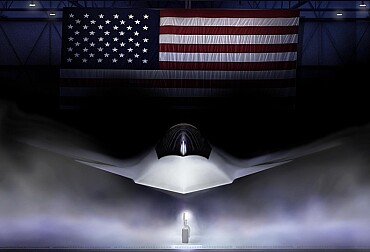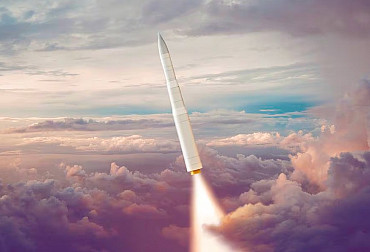The Mojave drone proves its capabilities
The mojave drone is a new drone that could give the United States and allies a decisive advantage under the Agile Combat Employment concept in a potential conflict with China and Russia. Recently, the drone demonstrated its ability to operate from the Royal Navy aircraft carrier.
The new Mojave drone is a short take-off and landing drone that is developed and tested by the US company General Atomics Aeronautical Systems. It can be deployed in both Intelligence, Surveillance, and Reconnaissance and firestrike missions. It has a payload capacity of approximately 1600 kilograms. It has seven hardpoints with various capacity. Overall, Mojave is capable of carrying up to 16 AGM-114 Hellfire missiles or its equivalent or electro-optical, infrared, signal intelligence or ground moving target indicator. It can also operate in the maritime domain.

The mojave can be transported by a C-130 transport aircraft. After C-130 landing, it takes approximately 90 minutes to roll Mojave out and take off. It can fly for eight hours with the ISR payload and three hours with 12 Hellfire missiles. The most important advantage is though the very short take-off distance of this drone. For the ISR mission, the take-off distance is only 122 meters. For the strike mission, it is 304 meters. It does not require paved runways and can operate from semi-improved surfaces. In addition to the traditional ground control station, the manufacturer is developing specialized command and control systems for battlefield conditions. This specific command and control system will be based on a laptop.
As mentioned in the article, the most important feature of the newest Mojave drone is the short take-off and landing capabilities. It could help US armed forces to operate, for instance, from WWII bases across the Pacific or some of the airfields in Europe in case of war with Russia. Mojave could also be deployed to aircraft carriers for ISR, strike, or antisubmarine warfare. For instance, in the Pacific theater, it could be deployed to spare valuable manned aircraft such as E-2D Hawkeye or P-8 Poseidon in contested airspace in the First and Second Island Chains due to robust China air defense systems and ISR network, particularly in the South China Sea. Mojave drone could also be deployed to amphibious assault ships such as Wasp-class and America-class to further increase and modernize Marine capabilities together with up to 20 F-35B fighter jets aboard those ships under the Lighting Carrier Concept, which could give Marines decisive advantage against China. In Europe, US armed forces and allies could deploy multiple Mojave drones from damaged or austere airfields throughout Europe, in particular on the eastern flank under the US concept of Agile Combat Employment, which, apart from other pillars, is based on the ability "to operate in contested, degraded, and operationally limited with minimal support." Mojave fits into this concept with its four-personnel team, 90 minutes of preparation, and short take-off and landing capability, as well as being transportable by single C-130 aircraft.
The manufacturer of the Mojave drone recently proved the exceptional features of the drone in cooperation with the Royal Navy. The Mojave drone took off and landed on the Royal Navy HMS Prince of Wales aircraft carrier. This experimental take-off and landing prove that Mojave could be carrier-capable without the need to use catapult system. That being said, it could be launched from Royal Navy aircraft carrier as well as from amphibious assault ships such as the aforementioned Wasp and America-class ships. This capability could give the US advantage in todays contested airspace in the First and Second Island Chains or in Europe and save expansive manned aircraft and their highly trained crew s lives. On the other hand, it could relatively easily help deplete Chinese or Russian air defense weapon stocks and simultaneously help to uncover air defense positions across the aforementioned regions.
The introduction and first experimental take-off and landing of the Mojave drone on the aircraft carrier could mean the beginning of the new era in the field of unmanned aerial vehicles. Together with MQ-25A Stingray and possibly loyal wingman projects, Mojave could form a highly capable fleet of unmanned aerial vehicles.







